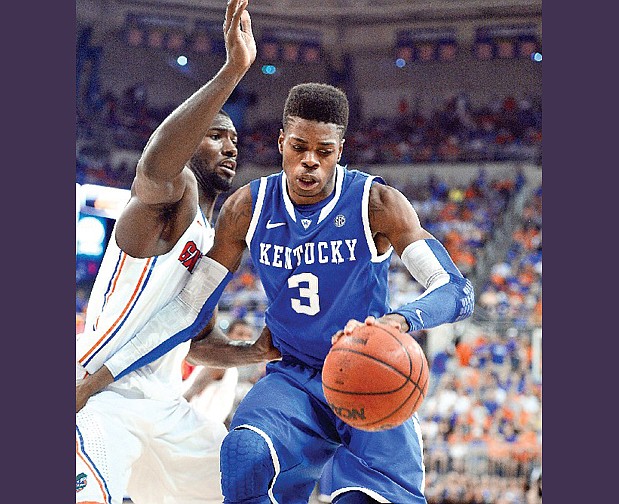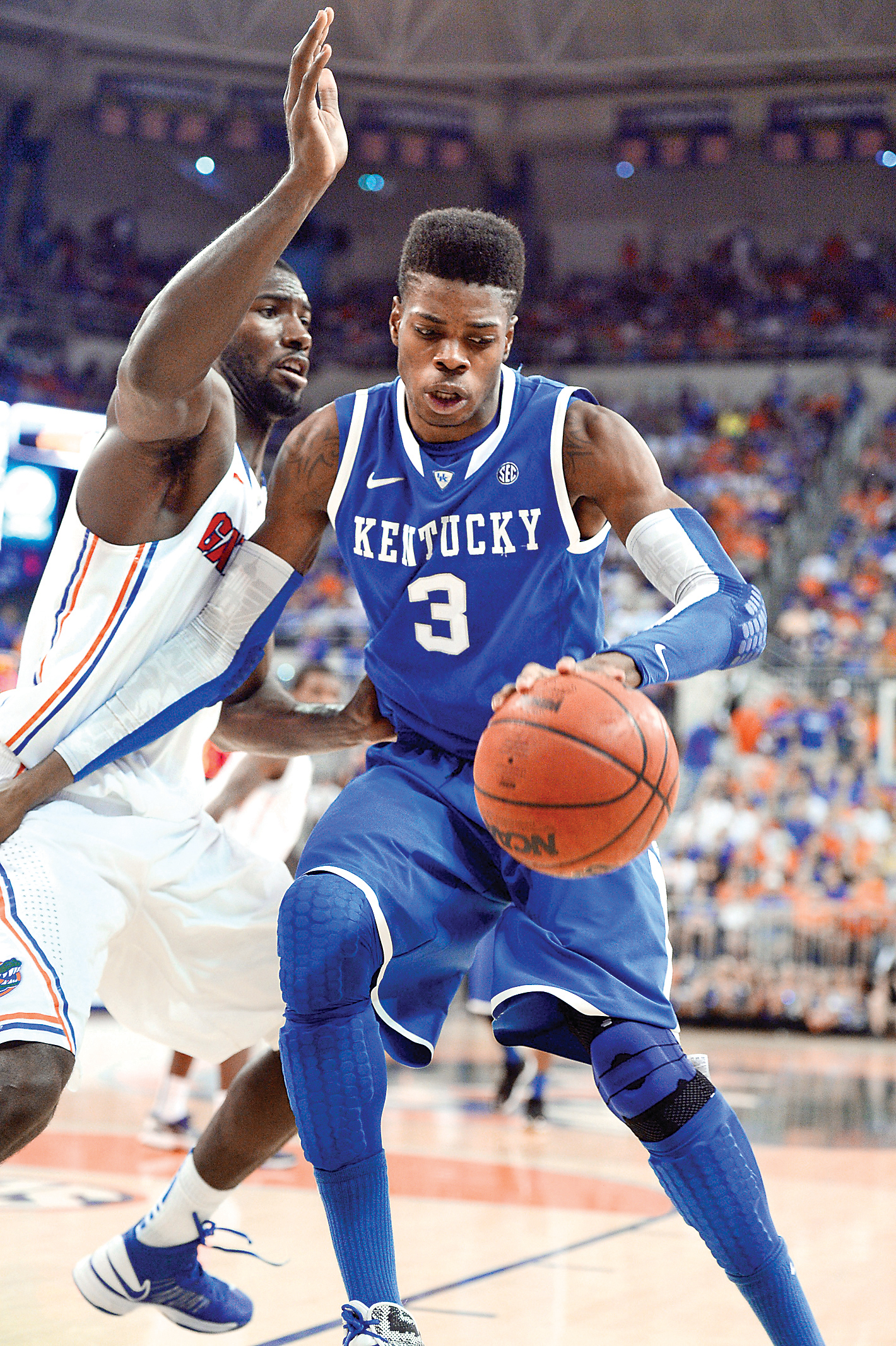The top overall pick in tonight's NBA draft, whether it's Kentucky center Nerlens Noel or Kansas guard Ben McLemore, will be someone who played just one season in college.
These elite talents are called "one-and-done" players, and they are abiding by an NBA rule requiring draftees to be at least 19 years old and a year removed from high school graduation. The one-and-done rule was implemented by the National Basketball Players Association before the 2006 draft, and it has become widely detested by college coaches.
"The one-and-done rule has hurt the game overall, and not just the college game," Auburn coach Tony Barbee said this week. "It's hurt the NBA game, too. The NBA is supposed to be a league of men who are prepared and ready to play, and it's become a developmental league. That's not what they wanted the one-and-done rule to turn into, but that's what happened."
Desire for the one-and-done can be traced back to the 1995 draft, when Kevin Garnett became the first player since Darryl Dawkins 20 years earlier to be selected straight out of high school. The selection of Garnett was followed by two more prep stars, Kobe Bryant and Jermaine O'Neal, being taken 13th and 17th in the '96 draft.
Garnett, Bryant and O'Neal flourished in the NBA, but their decisions led to countless other high-school players thinking they could do the same. One of the more notable was Korleone Young, who was selected by Detroit in the second round of the 1998 draft and played just three games for the Pistons before spending the rest of his career going from lesser league to lesser league and from country to country.
The one-and-done was intended to help a player develop for at least a year while encouraging an education, but the college game is now being plagued by having its stars showcased for just five months.
"Michael Jordan played three years in college," Georgia's Mark Fox said. "Larry Bird played forever, as did guys like Ralph Sampson and Akeem Olajuwon. The whole climate of that path has changed, and that's why I think that the NBA is not as good as it was years ago, and college basketball is not as good as it was years ago.
"If the Lakers rolled out there today with Kareem, Magic and Worthy, it would be over. The Miami Heat would have no chance."
THE POSTER CHILD
No program is more synonymous with the one-and-done rule than Kentucky, which has lost 11 players after one season since John Calipari became the coach of the Wildcats in 2009.
As a result, no individual is more linked to the rule than Calipari. Five of the last six top overall picks have been one-and-done players, and Calipari has coached three of them -- Memphis guard Derrick Rose in 2008, Kentucky guard John Wall in 2010 and Wildcats power forward Anthony Davis last year.
Davis and one-year teammate Michael Kidd-Gilchrist were the top two picks of last year's draft, which occurred several weeks after the Wildcats won the national championship. They had a new crop of freshmen this past season headed by Noel, but he tore his ACL in February and the rest of the class never met expectations as Kentucky went to the NIT and was bounced by Robert Morris.
"There are certainly some positives and negatives to the rule," Vanderbilt's Kevin Stallings said. "The positives are what Kentucky experienced two seasons ago, and the negatives might be what Kentucky experienced a season ago."
Calipari has been outspoken against the rule, wanting players instead to stay for at least two seasons.
The one-and-done may be having an even bigger effect on programs from BCS conferences who are trying to rebuild. After all, it's the likes of Kentucky, Duke, Kansas, Florida and North Carolina who keep reeling in the coveted players after losing others quickly to the NBA.
"The tradition-rich, established teams have the quicker path to recovery than some of the rest of us," said Fox, who has lost three players after only two seasons in the past three years. "I think it probably does make it harder."
IS THERE A SOLUTION?
In the opinion of most college basketball coaches, baseball has it right.
A baseball prospect can either choose to enter the draft out of high school or go to college, where he must stay for three years.
"I think we all thought we were doing a good thing by having them all go to college for a year," Stallings said. "We got what we wanted, and then I think we realized that what we wanted maybe wasn't ideal. I would love to see us go to a rule like the baseball rule to where kids could go out of high school, and if they matriculated to college, they would have to spend two or three years.
"That would be a healthier way to go about our business for the athletes."
Fox believes only two or three high-school players a year would try to jump from high school to the NBA and that having players in college for three years would enhance the college and NBA games. He added that it definitely would help Georgia.
Yet changing the one-and-done rule would have to come from the same governing body that introduced it, the NBPA.
"The NCAA has no control over that rule," Barbee said. "That is strictly a Players Association rule with the NBA, and I don't see them trying to help the college game in any way. I don't blame them, but it would obviously make our game a lot better if kids were forced to stay in college and develop not only on the basketball floor but as people.
"It would also help the NBA game, but I just don't see that happening because it won't be generated from our side."
Contact David Paschall at dpaschall@timesfreepress.com or 423-757-6524.

